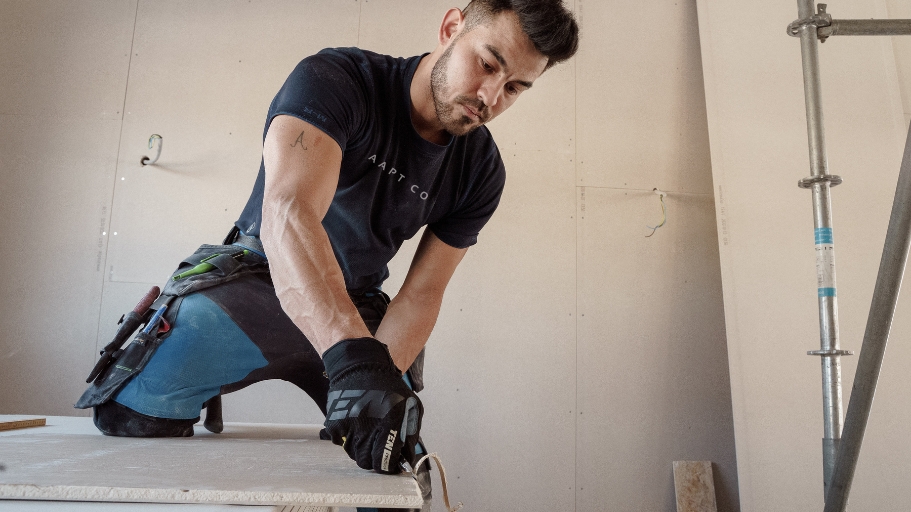6 Factors That Can Make or Break Your Home Renovation Project

Home renovations can be exciting. Whether you’re giving a tired room a fresh look, adding much-needed space, or just bringing your home up to date, the transformation can be truly rewarding. However, for those who dive into these projects without proper planning, the journey can quickly become overwhelming. It’s a bit like cooking a new dish for the first time. If you don’t have the right ingredients, tools, or recipe, things can go wrong quickly. In the world of home makeovers, understanding key factors is your recipe for success.
We’re here to discuss some of the main aspects you should keep in mind when embarking on a renovation journey.
Let’s get started.
1. Not Hiring Professional Home Remodelers
Sometimes, we all feel a bit handy. You watch a couple of home renovation shows and think, “I can do that!” Most homeowners also consider DIY routes to save on remodeling costs, which can be high in some cities. In Seattle, for instance, the cost to renovate an entire house ranges from $500-$800+ per square foot. But the truth is DIY isn’t for every project, especially when it comes to complex tasks. Let’s take bathroom renovations as an example.
Bathrooms might seem simple, but they’re packed with intricate details. From plumbing to waterproofing, each step demands specific skills. Imagine getting halfway through your bathroom project and realizing the plumbing is all wrong. Or, perhaps a few months down the line, you discover leaks because the waterproofing wasn’t done right. These mistakes aren’t just bothersome; they can be costly and dangerous.
Professional bathroom remodelers like Luxury Bath of Seattle bring expertise, experience, and the right tools. They know the common pitfalls, and more importantly, they know how to avoid them. Hiring a specialized bathroom remodeling company ensures your renovation is done right, saving you time, money, and headaches.
2. Clearly Defined Goals and Vision
Picture this: You’re on a road trip, but you don’t have a map or a clear destination in mind. You’d probably get lost. The same goes for your home renovation. If you don’t have a clear goal or vision for your project, it’s easy to stray from the path, waste resources, or end up with a result that doesn’t quite satisfy.
Start by asking yourself some basic questions. Why are you renovating? Is it to increase the value of your home? Or perhaps to create more space for a growing family? Maybe it’s just about giving a room a more modern feel. Understanding your ‘why’ is the foundation of your project. It will guide every decision, from budgeting to choosing materials.
Once you have the ‘why,’ visualize the ‘what.’ It could be as simple as drawing a sketch or creating a mood board with colors, materials, and inspirations. There are many apps and websites out there that can help you with this. Having a visual reference can help keep everyone on the same page – from family members to hired professionals.
3. Budget Planning and Management
Money is the fuel that drives your renovation engine. Without it, your project will stall before it even begins. But more money doesn’t always mean better results. It’s all about how you plan and manage your budget.
First, determine how much you can afford to spend. You’d be surprised how many people skip this step. Remember, a home renovation isn’t just about buying materials. You’ll have to consider labor costs, permits, and sometimes unexpected expenses that can crop up.
Once you have a figure in mind, create a detailed budget. Break down costs for every aspect of the project. Allocate funds for materials, labor, and permits, and always have a contingency – a little extra set aside for unforeseen costs. It ensures you won’t be caught off guard by unexpected expenses.
It’s also essential to track your expenses as you go. This way, if you’re spending too much in one area, you can adjust before it affects the entire project. Consider using budgeting tools or apps to help you keep tabs on your spending.
4. Quality of Materials
Picking the right materials for your renovation project is crucial for its longevity and function. It’s tempting to go for the cheapest options, but sometimes, spending a bit more upfront can save you money in the long run.
Research is your best friend here. Before buying any material, understand its pros and cons. For instance, while hardwood floors might look beautiful, they might not be the best choice for areas prone to moisture, like basements. In such cases, vinyl or tiles might be a more suitable choice.
Also, keep maintenance in mind. Some materials might look stunning but could require regular upkeep. If you’re not up for that commitment, you might want to explore other options.
Lastly, always check reviews or ask for recommendations. Often, others’ experiences can provide valuable insights that can guide your choices. Remember, the right materials not only enhance the beauty of your space but also ensure it stands the test of time.
5. Timelines and Scheduling
One common mistake many homeowners make is underestimating the time a project will take, which can lead to rushed jobs, mistakes, or even having to redo work.
Start by setting a realistic timeline. If you’re working with professionals, they’ll usually provide an estimate. Make sure you add some buffer days for unexpected delays like bad weather or waiting for materials.
Scheduling goes hand in hand with timelines. Let’s say you’re redoing your kitchen. If the cabinets are arriving before the old ones are out, where will you store them? Proper sequencing is key. Knowing what happens first, next, and last ensures a smoother workflow.
And remember, sometimes waiting is better. It allows you to recheck decisions, ensures work is thorough, and lets any applied materials like paint or sealant dry and settle properly.
6. Handling Unexpected Issues
Even with the best plans, surprises can pop up during renovations. Maybe you discover mold behind the walls, or the flooring has more wear and tear than you thought. These issues can throw a wrench in your plans if you’re not prepared.
The key is to stay calm and flexible. First, remember that buffer in your budget? That’s when it comes into play. It’s there to cover these unexpected costs. Secondly, be open to making adjustments. If a particular design or material doesn’t work due to unforeseen issues, be ready to pivot. Often, some of the best design elements come from having to think on your feet.
Additionally, keep the lines of communication open, especially if you’re working with professionals. They might offer solutions or alternatives you hadn’t considered. Their experience equips them to handle these bumps in the road efficiently.
You may like this
- Eight Renovations that Add Value to Your Home
- 10 Reasons to Remodel Your Bathroom
- 13 Home Improvement Tips to Consider Before Moving to a New Place
Conclusion
Renovating your home is a journey. It can be thrilling, a bit challenging, but ultimately rewarding. The key is preparation. By considering these factors, from clear visions to unexpected challenges and hiring expert remodelers, you set yourself up for success.
Recommended For You
10 Bathroom Upgrades That Are Worth Your Time & Investment
Most Inside
Most Inside offers high-quality recommendations and valuable updates to enhance all aspects of your life, providing premium guidance and enriching experiences.




